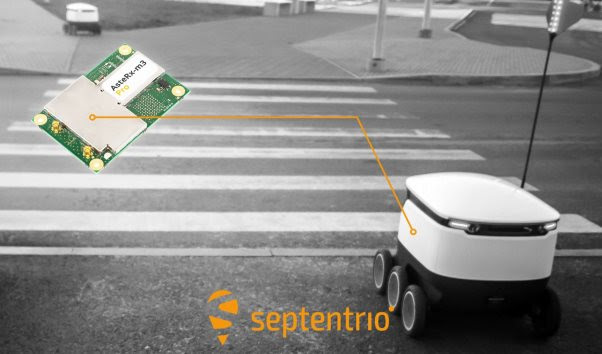Oct 13 2020
Septentrio, a leader in high-precision GNSS positioning solutions, announced today an expansion of its GPS/GNSS* OEM portfolio with the AsteRx-m3 Pro [MS1]receiver board. This next-gen receiver features Septentrio’s latest GNSS technology in a small form factor ideal for robotic applications where space and power are at a premium. As a specialized rover** receiver AsteRx-m3 Pro offers ease-of-integration and affordability with no compromises of performance. It features the lowest power consumption on the market, allowing longer operation times.

“With the AsteRx-m3 Pro, Septentrio redefines state-of-the-art GNSS positioning performance,” commented Danilo Sabbatini, Product Manager at Septentrio. “It was a challenge to design a product that delivers multi-frequency and multi-constellation positioning, combined with Septentrio’s renowned GNSS+ technology while optimizing power. The AsteRx-m3 Pro not only excels in this but does so at a reduced cost”.
The AsteRx-m3 Pro represents the next generation of technology in the GNSS OEM market, delivering centimeter-level accuracy, availability, and reliability in a credit-card sized form factor. It tracks signals from all available GNSS constellations on 3 frequencies and operates both in single and dual antenna modes. With a dual antenna it provides heading angles on top of accurate positioning directly from initialization and removes reliance on vehicle dynamics or magnetic sensors. With AsteRx-m3 Pro, Septentrio offers its next-generation GNSS technology, while improving customer experience and optimizing prices.
For more information about AsteRx-m3 Pro please visit www.septentrio.com/products or contact [email protected].
* Global Navigation Satellite System including the American GPS, European Galileo, Russian GLONASS, Chinese BeiDou, Japan’s QZSS and India’s NavIC. These satellite constellations broadcast positioning information to receivers which use it to calculate their absolute position.
** A rover receiver, unlike a base station, is a receiver on the move. This type of receiver calculates its position with centimeter-level accuracy by analyzing signals from various GNSS satellites and by using correction information from base station receivers.